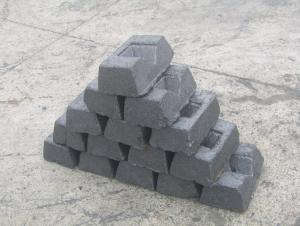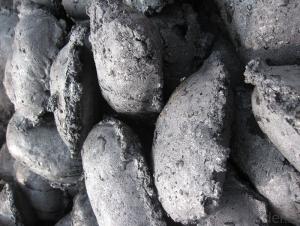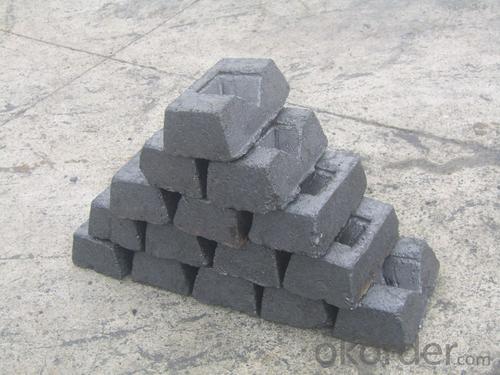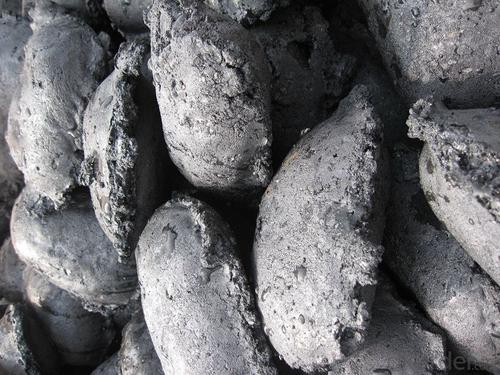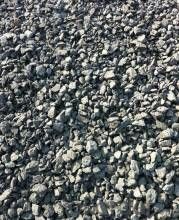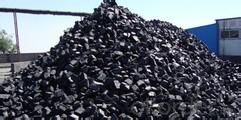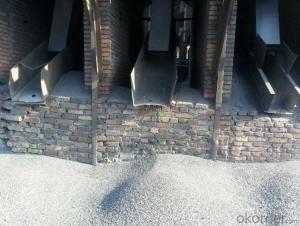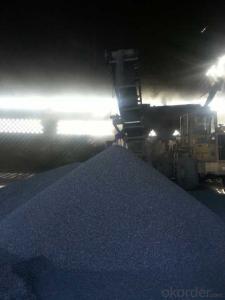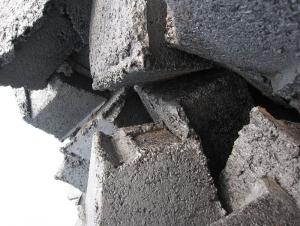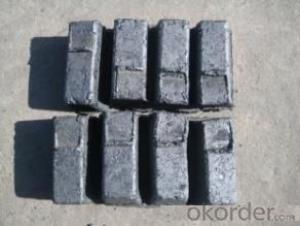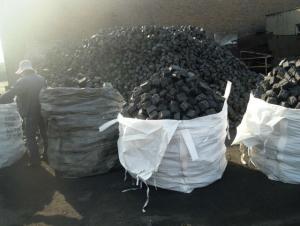Carbon Electrode Paste For Ferroallys' Production With Stable Quality
- Loading Port:
- Lianyungang
- Payment Terms:
- TT or LC
- Min Order Qty:
- 20 m.t.
- Supply Capability:
- 800 m.t./month
OKorder Service Pledge
OKorder Financial Service
You Might Also Like
Product Introduction
Carbon Electrode Paste is a self-baking electrode used in submerged arc furnaces for delivering power to the charge mix. Electrode Paste is added to the top of the electrode column in either cylindrical or briquette form. As the paste moves down the electrode column the temperature increase causes the paste to melt and subsequently bake forming a block of electrically conductive carbon. Electrode Paste is essentially a mix of Electrically Calcined Anthracite (ECA) or Calcined Petroleum Coke (CPC) with Coal Tar Pitch.
General Specification:
| PARAMETER UNIT GUARANTEE VALUE | ||||||
| Ash.( % ) | 4.0 max | 5.0 max | 6.0 max | 7.0 max | 9.0 max | 11.0 max |
| V.M (%) | 12.0-15.5 | 12.0-15.5 | 12.0-15.5 | 9.5-13.5 | 11.5-15.5 | 11.5-15.5 |
| Compress Strength. | 18.0 min | 17.0 min | 15.7 min | 19.6 min | 19.6 min | 19.6 min |
| Specific Resistance | 65 max | 68 max | 75 max | 80 max | 90 max | 90 max |
| Bulk Density | 1.38 min | 1.38 min | 1.38 min | 1.38 min | 1.38 min | 1.38 min |
Picture:
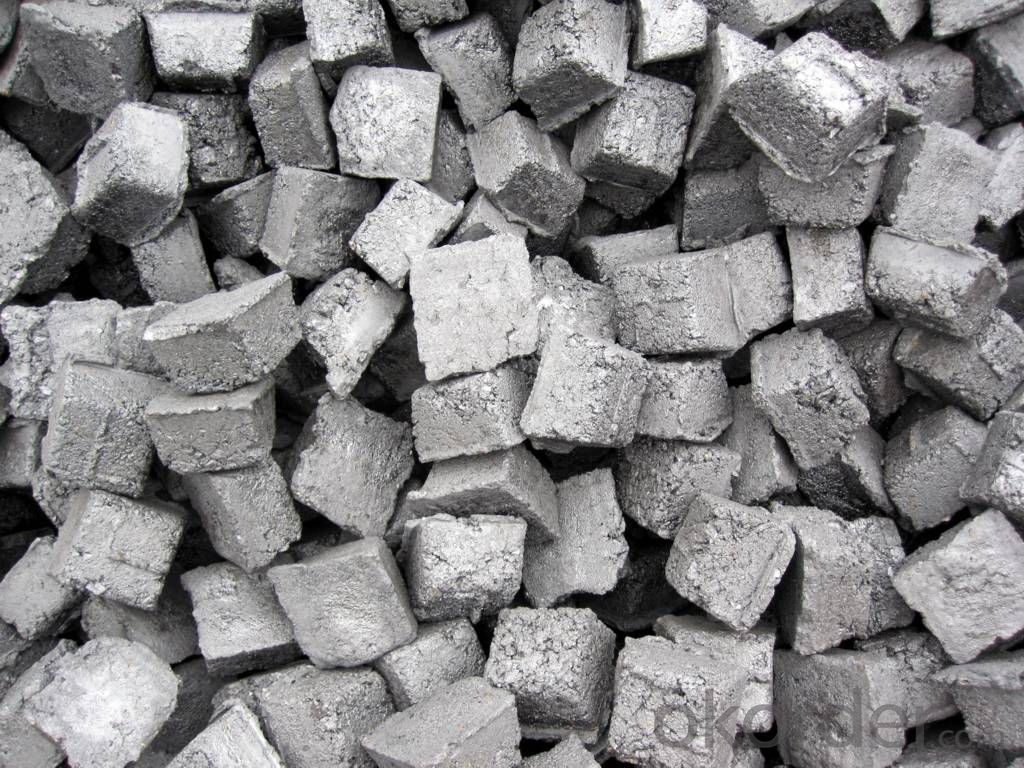
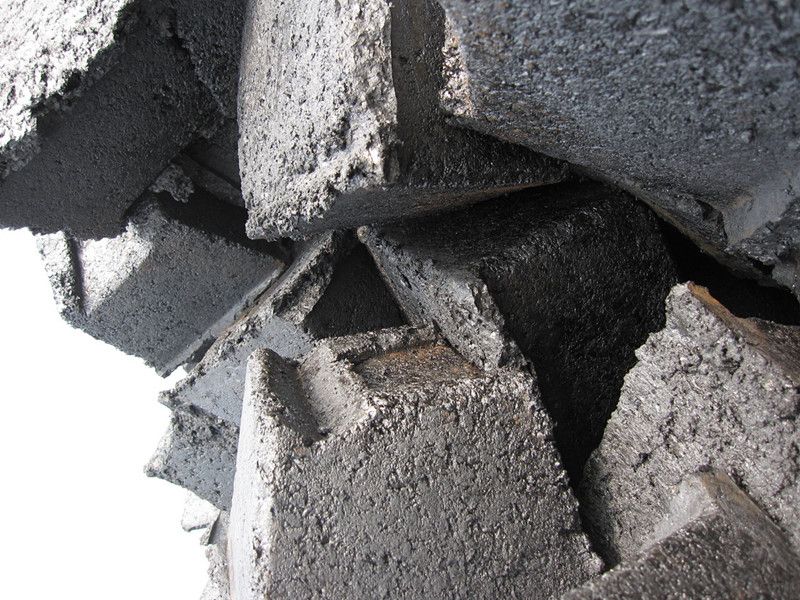
PACKAGE:
For Cylinder: two or four pieces are fixed into one pallet or as request
For Balls or lumps: in MT jumbo bags or as buyer's request
- Q: How are carbon markets regulated?
- Carbon markets are regulated through a combination of international, national, and regional frameworks that aim to ensure the integrity and transparency of emissions trading. One of the main international bodies overseeing carbon markets is the United Nations Framework Convention on Climate Change (UNFCCC), which established the Kyoto Protocol and the Paris Agreement. Under the Kyoto Protocol, an international emissions trading system was created, allowing countries to trade emission allowances through the Clean Development Mechanism (CDM) and Joint Implementation (JI) projects. The CDM and JI projects are approved and monitored by the UNFCCC, which ensures that emission reductions are real, measurable, and additional to what would have occurred without the project. The Paris Agreement, which succeeded the Kyoto Protocol, introduced a new market mechanism called the Sustainable Development Mechanism (SDM). The SDM aims to promote sustainable development and help countries achieve their climate goals by enabling emission reductions and removals through projects in developing countries. At the national and regional level, governments and regulatory bodies play a crucial role in the regulation of carbon markets. They establish legal frameworks, set emission reduction targets, and develop domestic emissions trading systems. These systems typically involve the allocation of emission allowances to companies or sectors, monitoring and reporting of emissions, and the trading of allowances on regulated platforms. To ensure the integrity of carbon markets, strict regulations are put in place to prevent fraud, double-counting, and other forms of market manipulation. Independent verification and accreditation bodies are responsible for auditing emissions data and project methodologies to ensure compliance with the established rules and standards. Furthermore, market oversight and enforcement bodies are established to monitor and enforce compliance with the regulations. These bodies have the authority to investigate and penalize any non-compliance, including imposing fines or revoking emission allowances. Overall, the regulation of carbon markets involves a complex network of international agreements, national legislation, and regulatory bodies. The aim is to create a robust and transparent market that incentivizes emission reductions and supports the transition to a low-carbon economy.
- Q: What are the limitations of carbon dating?
- Carbon dating, also known as radiocarbon dating, is a widely used method for determining the age of organic materials up to 50,000 years old. While it has revolutionized the field of archaeology and paleontology, it does have certain limitations that researchers must be aware of. One limitation of carbon dating is its inability to accurately date materials beyond the 50,000-year mark. This is due to the fact that carbon-14, the isotope used in carbon dating, has a half-life of only 5,730 years. As a result, after several half-lives, there is not enough carbon-14 remaining in a sample to accurately determine its age. Another limitation is the reliance on organic material. Carbon dating can only be used on organic materials such as bones, shells, wood, and charcoal. This means that it is not applicable to inorganic materials like rocks or minerals. Additionally, the presence of certain contaminants in the sample, such as humic acids or carbonates, can distort the carbon dating results. Furthermore, carbon dating is limited by the fact that it can only provide a relative age for the sample. It determines the ratio of carbon-14 to carbon-12 in the sample and compares it to the known ratio in the atmosphere. By assuming that the ratio has remained constant over time, an estimate of the sample's age can be made. However, variations in the atmospheric carbon-14 levels over time can affect the accuracy of this method. Additionally, carbon dating can be influenced by the presence of nuclear testing and other human activities that have released significant amounts of carbon-14 into the atmosphere. This is known as the "bomb effect" and can result in artificially younger dates for samples collected after the mid-20th century. Lastly, carbon dating can be limited by the size and condition of the sample. In order to obtain accurate results, a sufficient amount of organic material is required for analysis. This can be challenging when dealing with small or degraded samples, as the carbon-14 content may be insufficient or contaminated. In conclusion, while carbon dating is a valuable tool for determining the age of organic materials, it does have certain limitations. Researchers must consider these limitations and be cautious when interpreting the results, taking into account the age range, sample type, presence of contaminants, atmospheric variations, and sample size.
- Q: How does carbon affect water quality?
- Carbon can have both positive and negative effects on water quality. On one hand, carbon is a natural part of the carbon cycle and plays a crucial role in maintaining the balance of aquatic ecosystems. Carbon can act as a nutrient for aquatic plants, promoting their growth and providing food and habitat for other organisms within the food chain. However, excessive amounts of carbon in water can lead to negative impacts on water quality. One way this occurs is through an increase in dissolved organic carbon (DOC). Elevated levels of DOC can result from the decomposition of organic matter, such as dead plants and animals, and the leaching of organic compounds from soil. These organic compounds can have negative effects on water quality by reducing the amount of dissolved oxygen available for aquatic organisms, which can lead to the suffocation of fish and other aquatic life. Additionally, high levels of carbon can contribute to the process of eutrophication. Eutrophication occurs when there is an excess of nutrients, including carbon, in water bodies, leading to an overgrowth of algae and other aquatic plants. This excessive growth can result in the depletion of oxygen levels in the water as the plants decompose, causing harm to fish and other organisms that rely on oxygen for survival. Furthermore, carbon can also interact with other pollutants present in water, such as heavy metals and pesticides, which can become more toxic and bioavailable when combined with carbon. This can have detrimental effects on aquatic organisms and disrupt the overall balance of the ecosystem. Overall, while carbon is essential for the functioning of aquatic ecosystems, excessive amounts can negatively impact water quality by reducing oxygen levels, promoting eutrophication, and enhancing the toxicity of other pollutants. Therefore, it is crucial to monitor and manage carbon levels in water bodies to ensure the maintenance of a healthy and balanced aquatic ecosystem.
- Q: What are the consequences of increased carbon emissions on coastal regions?
- Increased carbon emissions have significant consequences on coastal regions. One of the most alarming consequences is the rise in sea levels. As carbon dioxide and other greenhouse gases trap heat in the atmosphere, they contribute to the warming of the planet. This leads to the melting of glaciers and polar ice caps, causing sea levels to rise. Higher sea levels pose a threat to coastal regions as they can result in increased flooding, erosion, and the loss of coastal ecosystems. In addition to rising sea levels, increased carbon emissions also contribute to ocean acidification. When carbon dioxide is absorbed by seawater, it forms carbonic acid, which lowers the pH of the ocean. This decrease in pH has detrimental effects on marine life, particularly on coral reefs and shellfish. Acidic waters make it difficult for coral reefs to build their calcium carbonate structures, leading to their bleaching and eventual death. Similarly, shellfish such as oysters, clams, and mussels struggle to develop their shells in more acidic waters, impacting their survival and the entire coastal food chain. Furthermore, higher levels of carbon emissions contribute to the intensification of storms and extreme weather events. Rising temperatures in coastal regions can lead to more frequent and severe hurricanes, cyclones, and storm surges. These events can cause extensive damage to coastal infrastructure, including homes, businesses, and critical infrastructure like roads and power lines. The increased frequency of storms also puts coastal communities at a higher risk of displacement and loss of livelihoods. Finally, increased carbon emissions contribute to global warming, which in turn leads to higher air temperatures. The warming of coastal regions can have adverse effects on the overall ecosystem. For instance, warmer waters can lead to the migration or extinction of certain species, disrupting the delicate balance of coastal ecosystems. It can also impact the health and productivity of fisheries, affecting the livelihood of communities reliant on fishing. In conclusion, increased carbon emissions have far-reaching consequences on coastal regions. Rising sea levels, ocean acidification, intensified storms, and the overall warming of coastal ecosystems pose significant threats to the environment, economies, and communities in these areas. It is crucial to reduce carbon emissions and take proactive measures to mitigate these consequences and protect our coastal regions for future generations.
- Q: How does carbon impact air quality?
- The release of carbon dioxide (CO2) and other carbon-based pollutants into the atmosphere can significantly affect air quality. When fossil fuels like coal, oil, and natural gas are burned, they emit large amounts of carbon dioxide, a greenhouse gas that contributes to climate change. This increase in carbon dioxide levels in the atmosphere causes the Earth's surface to warm, leading to adverse effects on air quality. Moreover, incomplete combustion of fossil fuels and other organic materials can also release carbon-based pollutants like carbon monoxide (CO) and volatile organic compounds (VOCs). These pollutants have detrimental effects on human health and can contribute to the formation of ground-level ozone, which is a major component of smog. Breathing in ozone can cause respiratory problems, lung damage, and worsen existing respiratory conditions such as asthma. Additionally, burning fossil fuels, biomass, and other organic matter releases carbon particles known as black carbon or soot. These particles directly impact air quality by absorbing sunlight and reducing visibility. When inhaled, they can penetrate deep into the lungs, leading to respiratory issues and potential long-term health problems. To improve air quality and mitigate the negative impacts on human health and the environment, it is crucial to reduce carbon emissions. This can be achieved by transitioning to cleaner and more sustainable energy sources, such as renewable energy. Additionally, implementing stricter regulations and emission standards for industries and vehicles can contribute to reducing carbon pollution and improving overall air quality.
- Q: What are the long-term effects of increased carbon emissions on ecosystems?
- Increased carbon emissions have significant long-term effects on ecosystems. One of the most notable impacts is climate change, as carbon dioxide is a greenhouse gas that traps heat in the atmosphere. This leads to rising temperatures, altered weather patterns, and increased frequency and intensity of extreme weather events such as hurricanes, droughts, and wildfires. These changes in climate have numerous negative consequences for ecosystems. For instance, rising temperatures directly affect the physiology and behavior of plants and animals. Many species have specific temperature requirements for reproduction, feeding, and survival, and even slight changes can disrupt their life cycles and lead to population declines or extinctions. Furthermore, increased carbon emissions contribute to ocean acidification, a process where the excess carbon dioxide in the atmosphere dissolves in seawater, forming carbonic acid. This acidification has devastating effects on marine ecosystems, particularly coral reefs and shell-forming organisms like oysters and clams. It weakens their calcium carbonate structures and inhibits their growth and reproduction, ultimately leading to their decline. In addition, carbon emissions influence the distribution and composition of plant communities. As carbon dioxide is a vital component for photosynthesis, elevated levels can enhance plant growth and productivity. However, this can also lead to changes in plant composition and the competitive balance between species, favoring certain fast-growing species over others. This can disrupt the delicate relationships between plants and their pollinators, herbivores, and other organisms, affecting the entire food web. Moreover, increased carbon emissions contribute to the loss of biodiversity. Many species are highly specialized and adapted to specific environmental conditions. As habitats change due to climate change, certain species may struggle to adapt or find suitable alternatives, leading to declines or local extinctions. This loss of biodiversity can have cascading effects throughout ecosystems, disrupting ecological processes and reducing the resilience and stability of entire ecosystems. Overall, increased carbon emissions have far-reaching and detrimental long-term effects on ecosystems. They cause climate change, ocean acidification, alter plant communities, and drive biodiversity loss. It is crucial to reduce carbon emissions and mitigate climate change to protect and preserve the health and functioning of ecosystems for future generations.
- Q: What are the different types of carbon-based pigments?
- Various industries widely use several different types of carbon-based pigments. Some of the most commonly used types are carbon black, graphite, charcoal, and lampblack. Carbon black, renowned for its intense black color, is a highly pure form of carbon produced through the incomplete combustion of hydrocarbon fuels. It finds extensive applications in inks, paints, plastics, and rubber products. Graphite, on the other hand, is an important carbon-based pigment known for its dark gray to black shade. It is a brittle material that can be easily crushed into a fine powder. Graphite is primarily used in pencils due to its ability to leave a smooth and consistent mark on paper. Additionally, it finds utility in lubricants, batteries, and electrical conductors. Charcoal, obtained by burning wood or organic materials without oxygen, is a carbon-based pigment admired for its deep black color. Artists commonly use charcoal as a drawing medium because it can be easily manipulated and smudged on paper, allowing for the creation of various tones and textures. Lampblack, also referred to as carbon black or soot, is a pigment produced by burning organic materials like oil or wood. It possesses a profound black hue and is frequently employed in printing inks, coatings, and dyes. Lampblack is also utilized in diverse industrial applications, including as a coloring agent in plastics and rubber products. These examples represent only a fraction of the diverse carbon-based pigments commonly employed. Each type possesses unique attributes and serves essential purposes in various industries.
- Q: What is the most common isotope of carbon?
- The most common isotope of carbon is carbon-12.
- Q: What is the concept of carbon equivalent? What is the relationship between carbon equivalent and weldability?
- In order to facilitate the expression of strength properties of these materials and welding performance simply to carbon equivalent to said through the statistics of test data.
- Q: What are the main sources of carbon on Earth?
- Both natural and anthropogenic sources contribute to the presence of carbon on Earth. Carbon dioxide (CO2) is naturally released into the atmosphere through processes such as volcanic eruptions, respiration by plants and animals, and the decay of organic matter. Carbon is also found in carbonate rocks in the Earth's lithosphere, formed from marine organisms' shells and skeletons. Anthropogenic sources of carbon primarily arise from the combustion of fossil fuels like coal, oil, and natural gas for energy and transportation purposes. When these fuels are burned, carbon dioxide is emitted, leading to the greenhouse effect and climate change. Deforestation and land-use changes also release carbon stored in trees and vegetation. Furthermore, industrial processes, cement production, and waste management activities contribute to the emission of carbon dioxide and other greenhouse gases. These human activities release carbon that has been sequestered for millions of years, significantly disrupting the natural carbon cycle. In conclusion, although carbon is naturally present on Earth, human actions have greatly amplified its release into the atmosphere, raising concerns about climate change and the urgent need for sustainable practices to reduce carbon emissions.
Send your message to us
Carbon Electrode Paste For Ferroallys' Production With Stable Quality
- Loading Port:
- Lianyungang
- Payment Terms:
- TT or LC
- Min Order Qty:
- 20 m.t.
- Supply Capability:
- 800 m.t./month
OKorder Service Pledge
OKorder Financial Service
Similar products
Hot products
Hot Searches
